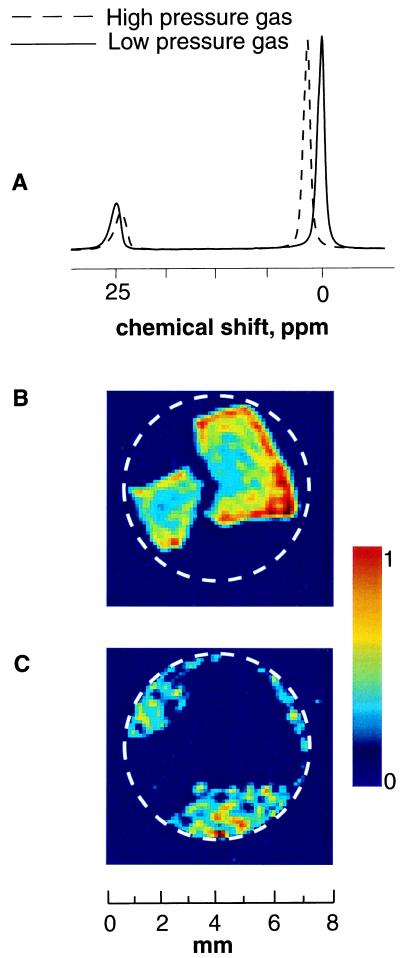Figure 1.
(A) NMR spectra of laser-polarized 129Xe flowing through aerogel fragments at two different pressures (T = 290 K). Xenon occluded in aerogel gives rise to a signal around 25 ppm, where the pure gas phase (bulk phase) at 1 atmosphere (atm; 1 atm = 101.3 kPa) has been used as a reference at 0 ppm. The solid line shows the spectrum recorded at 1 atm total pressure (0.5 atm of Xe and 0.5 atm of N2), and the dashed line shows the result at 4 atm (3 atm of Xe and 1 atm of N2). (B) “Polarization-weighted” images of laser-polarized xenon diffusing into aerogel fragments, based on chemical shift selection of the transition at 25 ppm (spectrum in A, solid line). The 2D magnetic resonance image slices (perpendicular to the flow) from the full 3D data set, with a resolution of 250 × 250 × 100 μm, are recorded at T = 290 K by using lower pressure gas mixture with a pulse time delay of 0.4 s. The white circle designates the wall of the sample container. (C) Polarization-weighted images of bulk laser-polarized xenon gas outside the aerogel fragments, based on chemical shift selection of the transition at 0 ppm (see Fig. 1A, solid line). The image is a 2D slice from the full 3D data set with a resolution of 250 × 250 × 100 μm, taken perpendicular to the flow with a pulse time delay of 0.4 s.

